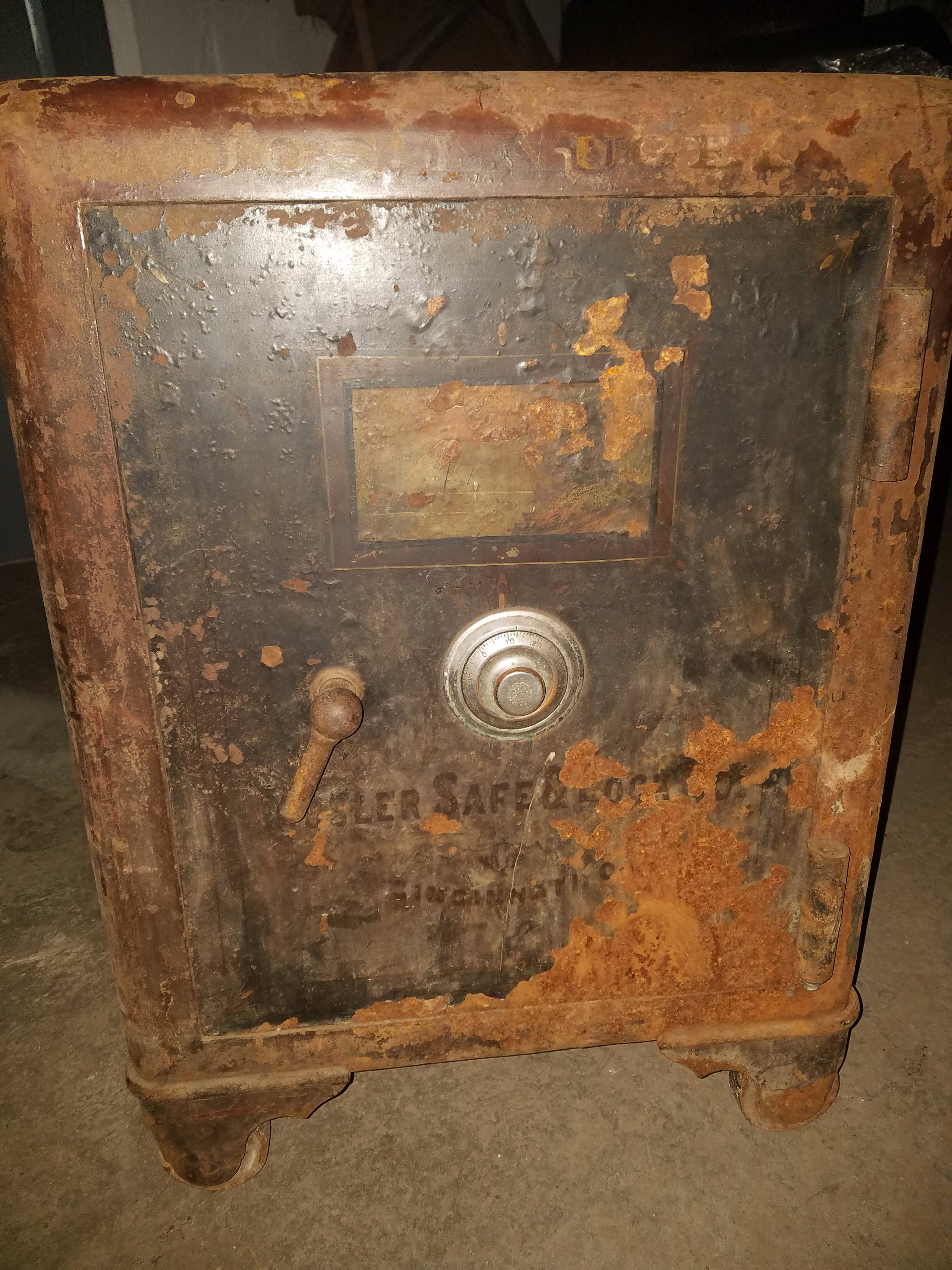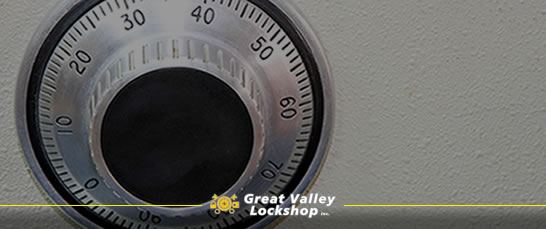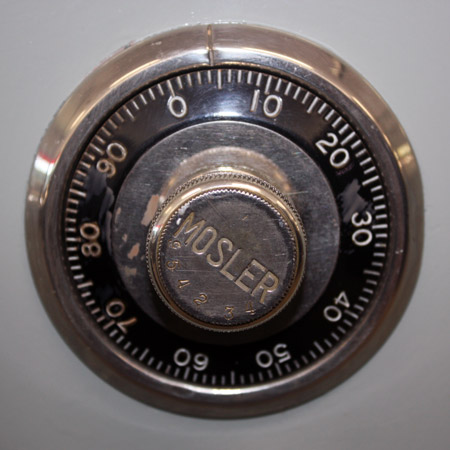The purpose of this section is to assist you in identifying what type of safe and/or lock you have, or at least tell you what to look for — before you call. This will allow us to help you with both residential and commercial safe lock issues. It will also help you to determine the procedure for changing electronic safe lock codes or determine the correct dialing procedure for your mechanical combination lock.
If you are in West Michigan or Central Michigan call Hoogerhyde Safe. But first — please do your best to identify the type of lock you have or the type of problem you are experiencing by reading the information below! If you call us without first attempting to identify the lock or problem, we will direct you to this page anyway. There are too many questions to ask for a brief phone call. If you are still having trouble after that, call us while you are standing next to your safe and we will help you.

Safe Eyes Serial Number Lookup. And keep the humidity below @ 80% so the major safe he has will not protect his data Search. There are 6 main gun safe series with 17 different safes to choose. A model number of 266948 is written on the round portion of. Look for a safe manufacturer’s name and/or model number on the safe door; Is the safe relatively new or does it seem to be 40 or more years old? If it is 40 years old or less, a safe serial number might help — look for one; How many numbers are shown on the dial? Can you tell whether the lock system is direct entry? DieboldDirect.com is the official ATM supplies and branch supplies website for Diebold, Incorporated. Our supplies are commonly used at credit unions, banks and other financial institutions. Products include ATM receipt paper, ATM cassettes, ATM ribbons, ATM cleaning supplies, deposit envelopes, drive-thru VAT carriers, coin bags, FDIC/NCUA signage, cash trays.
Mechanical Combination Safe Locks
What Kind of Combination Lock Do I Have?
The following points will help to identify which type of mechanical combination lock you have:
- Look for identifying marks on the lock dial
- Look for a safe manufacturer’s name and/or model number on the safe door
- Is the safe relatively new or does it seem to be 40 or more years old? More than 100?
- If it is 40 years old or less, a safe serial number might help — look for one
- How many numbers are shown on the dial?
- Can you tell whether the lock system is direct entry? (See below)
- Do you know the proper dialing procedure?
- Are there dialing indicator marks at 12:00 and 11:00 positions, or only at 12:00?
- Is the dial plastic or metal?
- Where did you get the safe?
- Remove the back panel of the safe door. If you can see the lock, you can usually find information either embossed on the lock cover or on a paper label. Warning: Do not remove the lock or the lock cover!
Group 2 Locks: Over the last 40 or so years, the most common type of combination lock on good quality safes is a Group 2, or a lock that mimics a Group 2. This is a security certification, a rating for burglary deterrence which is awarded by Underwriters Laboratory based on extensive testing. The largest manufacturers of Group 2 locks are Sargent & Greenleaf (S&G), LaGard (LG), Diebold, and Mosler. These manufacturers sometimes put their names on the dials of their locks; other manufacturers rarely do.
Group 2M, Group 1, and Group 1M Locks: U.L. awards these certifications for locks that achieve even higher security levels, again based on extensive testing. Group 2M, Group 1 and Group 1M locks are uncommon but sometimes used by banks, credit unions, jewelers, etc. It is unlikely that you have one of these.
Direct Entry Lock Systems: Many cheap safes and old safes use what is called a direct entry lock system. These are all less secure than Group 2 locks. There are several ways to identify one of these:
- Put some pressure on the safe’s opening handle and then turn the lock dial. If, through the handle, you can feel the lock turning, then it is a direct entry lock.
- Some direct entry units use a key or thumb-turn along with the dial; the key or thumb-turn, rather than an opening handle, throws the safe bolts. You can usually feel the dial turning when you put turning pressure on the key or thumb-turn.
- If the safe has only a dial and not a separate handle, then it is also a direct entry lock.

Old Safe Model Locks: Old safes (before Group 2 locks became the standard for good security) had numerous types of combination locks. Likewise there were many different dialing procedures. Most modern lock dials have 100 numbers; older locks may have only 60, 50 30 or 25.

The above information should help you determine what type of combination lock you have, or at least narrow down your search. If you are still unsure, call us while you are standing next to your safe.
For typical dialing sequences, go to Mechanical Combination Lock Dialing Procedures.
Precisely Identify the Problem with the Combination Lock
Answering these questions will allow a locksmith or safe tech to give you the best assistance when you call. Here are the most common problems with combination safe locks:
- Lost combination?
- Lost operating instructions?
- Are you certain you are using the proper dialing procedure?
- Damage from break-in or vandalism?
- Did it just suddenly stop working, or was there a minor problem that gradually kept getting worse?
- Is the dial hard to turn, does it feel normal, or does it feel like it is “free-wheeling”?
- Is the dial stuck and not moving at all?
- Does it feel like the lock is working properly but the door still will not open?
Electronic Safe Locks
There are more types of electronic locks than dial types. Even though they have only been around for about 20 years, a number of them are obsolete with no exact replacements available. Some models do nothing more than unlock with just one user code. Some have multiple user codes, time delays, alarm capabilities, etc. Electronic locks are more delicate than dial locks: Keypads can wear out, liquids can short out the electronics, battery wires get pinched or broken, they are easily damaged when bumped, etc.

What Kind of Electronic Lock Do I Have?
The following points will help to identify which type of electronic safe lock you have:
- Look at the face of the keypad for some kind of brand identification. Sargent & Greenleaf (S&G), LaGard (LG or Basic), Secure Ram, Kaba, Mas Hamilton, and American Security (Amsec) locks are usually identified on the keypads. Some keypads show model numbers but most do not. Many have no identification at all, which makes the safe model critical.
- What is the code entry procedure? Lock manufacturers typically have their own unique unlocking pattern. For example: If you start by pushing C, then 6 digits, and finish with #, it is probably an Amsec ESL 5, 10 or 20; six digits followed by # could be a number of locks but the most likely is S&G; hitting nothing except six digits is probably Lagard; if you start by turning an outside ring back & forth before entering the code it is a Kaba; if you turn an outer ring after putting in the code, that narrows it down.
- What brand and model safe is it? Typically modern safe manufacturers will only use specific brands of locks on their safes, so knowing the safe model will help narrow your search.
- If the safe brand and model are not known, where did the safe come from?
- What shapes are the keypad and buttons? Is the keypad round, square or rectangular? Are there three rows of four buttons or four rows of three buttons, or something else? Are the buttons round or square? Are they smooth membrane-type buttons, or do they stick out?
- Does the keypad have any other differentiating factors? Is there a key hole near or under the keypad? Is there an LED screen on the keypad? Are there two silver battery contacts on the left side of the keypad? How many LED Dots are on the keypad, if any? Are the buttons on top of the keypad rather than on the face? Is there a fingerprint reader?
- Can you tell where the batteries go?
- Does it use 9-volt batteries or AA?
The information above should help determine what brand of electronic safe lock you have, or at least narrow down the possibilities. If you are still unsure, give us a call us.
What Is Wrong With My Electronic Safe Lock?
The number one most common reason for problems with electronic locks is battery issues. Try new batteries before calling! The only two types of batteries to use in safe locks are Duracell and Energizer alkaline. Store brand batteries, lithium, rechargeable and other types or brands do not work consistently, and can possibly damage the lock.
The number two biggest problem is that the lock does not work at all after changing batteries. This is caused by either putting the batteries in backwards, or by breaking the battery connections. Be careful when changing batteries!

After you’ve ruled out battery related problems, answering the following questions will allow a locksmith to assist you efficiently when you call. Here are the most common problems with electronic safe locks:
- Did the lock stop working all at once or gradually?
- Are there just one or two buttons that don’t work, or are they all dead?
- Was it damaged by break-in or vandalism?
- When entering the code do you get “normal signals” in the form of beeps or lights?
- Do you get lights, beeps and maybe a “click” but it won’t open?
- Can you hear a motor run?
- Is the lock completely dead?
- Do you get multiple beeps after entering the code?
- Do multiple beeps interrupt you in the middle entering the code?
- After entering the code does a light flash every few seconds?
Diebold Safe Serial Numbers Lookup
Call Us if You Still Need Help.
Diebold Safe Serial Number
When you have answered these questions you are ready to get help. If you are in West or Central Michigan, call Hoogerhyde Safe. We are in the business of helping people with safe and lock issues. We appreciate your business and look forward to hearing from you!